You always hurt the ones you love: your phone (dropped in the toilet), the TV remote (trod on in a dash to receive a delivery). But sometimes, those beloved devices are the ones that hurt you. Whether or not they love you back is moot. Spending hours in intimate contact with a vape pen or under a hovering drone is, in fact, a recipe for injury. Whether it’s you or your device or both of you that ends up broken depends on luck as much as on the laws of physics. What we do know is that every smart new invention comes with its own new expansion pack of unique dangers. The National Electronic Injury Surveillance System estimates the annual injuries to people (rather than products) in the U.S. each year based on a sample of hospital reports from across the country. With readers’ safety in mind, Electronics Hub has analyzed the data to highlight the consumer electronics that cause the most injuries — and the recent inventions that claim more victims as they become more commonplace.
What We Did
Electronics Hub analyzed injury data from the NEISS injury database, which collects data on consumer product-related injuries in the U.S. We ranked the 27 most dangerous electronic devices from the latest year with available data (2021) and charted the five-year injury trends related to virtual reality headsets, drones, vape pens, TV remotes, video games and smartphones.
Key Findings
Smartphones cause 34,443 injuries per year in the U.S., which is more than any other consumer electronic device. Visual media, such as TVs, video games and computers, are also among the leading causes of injury. The number of video game injuries per year peaked at 25,838 in 2020. Injuries related to VR headsets rose by 434.6% between 2020-21.
Smartphones Cause 34,443 Annual Injuries
The most dangerous consumer electronics tend to be those we stare at while working, playing or communicating. Between them, smartphones, TVs, video games and computers cause 105,000 injuries per year. Relatively new products such as vape pens, VR sets and drones cause far fewer injuries, although figures are rising (see trend sections below). Electronics that require more constant active attention, such as cameras, controllers and joysticks, only cause injury numbers in two-three figures each year. Click here to see the image in full size NEISS data refers to injuries associated with a particular device, so it isn’t necessarily the phone or TV that does the harm. Instead, the victim may injure themselves in some other way because they are distracted by the media device. However, that is not to say that these items aren’t also dangerous objects. For example, a TV may seem like a sturdy, inanimate object. Still, around 360 people have been killed by falling televisions since 2000, according to Consumer Product Safety Commission tip-over fatalities figures.
Five-year Trend: Virtual Reality Headsets Injuries
Click here to see the image in full size Who would’ve thought that covering your eyes with a portal to another universe wrapped in a half-kilo headset could lead to trips and falls? VR use in the U.S. more than doubled between 2017 and the end of 2020, and headsets were identified as a leading cause of an overall 31% spike in insurance claims in 2021. With injuries ranging from “gorilla arm syndrome” to a broken neck, the next VR trend will likely be installing soft rooms — but for now, anxious parents are lining kids’ bedrooms with pillows.
Five-year Trend: Drones Injuries
Click here to see the image in full size Duck! Drones are fast-moving airborne vehicles with spinning propellers, often flown by (certified) hobbyists. 2017 was a big year for drone regulation and normalization, which may explain why injury numbers dropped in 2018; by the middle of the latter, the Federal Aviation Administration had issued 100,000 remote pilot certificates. But 2021 was a boom time for drones, and the injury tally increased by 76% year-on-year. There has never been a better time to invest in a safety helmet since experts predict that drones will get bigger, more powerful and (for better or worse) smarter soon.
Five-year Trend: Vape Pens Injuries
Click here to see the image in full size Vape pens have the unique property of commonly causing injuries from inside the body. “Now, in addition to creating an epidemic of nicotine-addicted youth, vaping e-cigarette products is sending kids to the ER with lung failure,” says pulmonologist Hasmeena Kathuria. But sudden lung injury isn’t the only risk — exploding vape pens can cause serious damage to your face. The fall in injury rates during 2020 is likely due to the closure of schools during the early days of the pandemic lockdown; teen vaping rates had more than doubled between 2017-19.
Five-year Trend: TV Remotes Injuries
Click here to see the image in full size The TV remote is not the most glamorous of devices. Still, its dangers are manifold: from the risk of swallowing its batteries (among certain demographics) to rupturing knee cartilage as you stretch to pick it up, to using it to hack the local rail network and derailing trains. The use-value and status symbol quality of holding the remote may drive certain family members (kids, according to this scientific paper, but dads anecdotally) to risk injury in the quest to obtain it. Parents are warned not to put the remote on a high shelf or on top of a heavy TV where Junior may scramble to reach it.
Five-year Trend: Video Games Injuries
Click here to see the image in full size “It’s usually the thumb joints that are most affected,” says hand surgeon Dr. Pedro K. Beredjiklian. “The thumb is overused on both our mobile devices for texting and swiping and on game console controllers.” The problem is exacerbated by the rise in mobile device gaming, with 215 million Americans — more commonly over age 45 than under 18 — now regularly playing video games, many of them on devices not made for the pastime. “A lot of these problems are caused by non-ergonomic designs in the devices,” adds Dr. Beredjiklian. “As technology gets smaller, it becomes harder for the hand, causing inflammation.”
Five-year Trend: Smartphones Injuries
Click here to see the image in full size Some 97% of Americans now own a cellphone; 85% have a smartphone. They spend 5.4 hours of the day on them, checking them up to 63 times. Injuries ensue. Some are dramatic (exploding phones), while others involve the inevitable wear and tear of overuse. “The patient’s right thumb knuckle is inflamed, swollen and often painful,” reports ER physician Carolyn Barber of one case study — herself. “Her grip is slightly weakened, and her palm aches. Her middle finger intermittently has a new “catch” to it when bent. The second and third fingers are slightly swollen.”
Watch Out
While new devices come with brand new injuries — remember ‘Blackberry thumb’? — consumer electronics conform to safety regulations, which means that injuries are often down to human error rather than the device itself. Video games and smartphones are among those devices that often lead to injury through overuse and poor ergonomics. Regular breaks and a mindful grip and posture are good habits to develop for these most common injuries. But with distraction and child misadventure among other leading causes of device injury as we field out responsibilities to electronics, there’s one habit that can drastically reduce the chance of a trip to ER or worse: pay attention!
METHODOLOGY & SOURCES
We sourced injury data from the National Electronic Injury Database (NEISS). The primary purpose of NEISS is to collect data on consumer product-related injuries occurring in the United States. The Consumer Product Safety Commission (CPSC) uses this data to produce nationwide estimates of product-related injuries. NEISS is based on a nationally representative probability sample of 100 hospitals in the U.S. and its territories. Each participating NEISS hospital reports patient information for every emergency department visit associated with a consumer product. The total number of product-related hospital emergency department visits nationwide can be estimated from the sample of cases reported in the NEISS. The dataset itself provides weightings for each individual case. This allowed us to estimate the total number of injuries caused by each consumer electronic device every year from 2017 to 2021. The data was collected in November 2022. Comment * Name * Email * Website
Δ




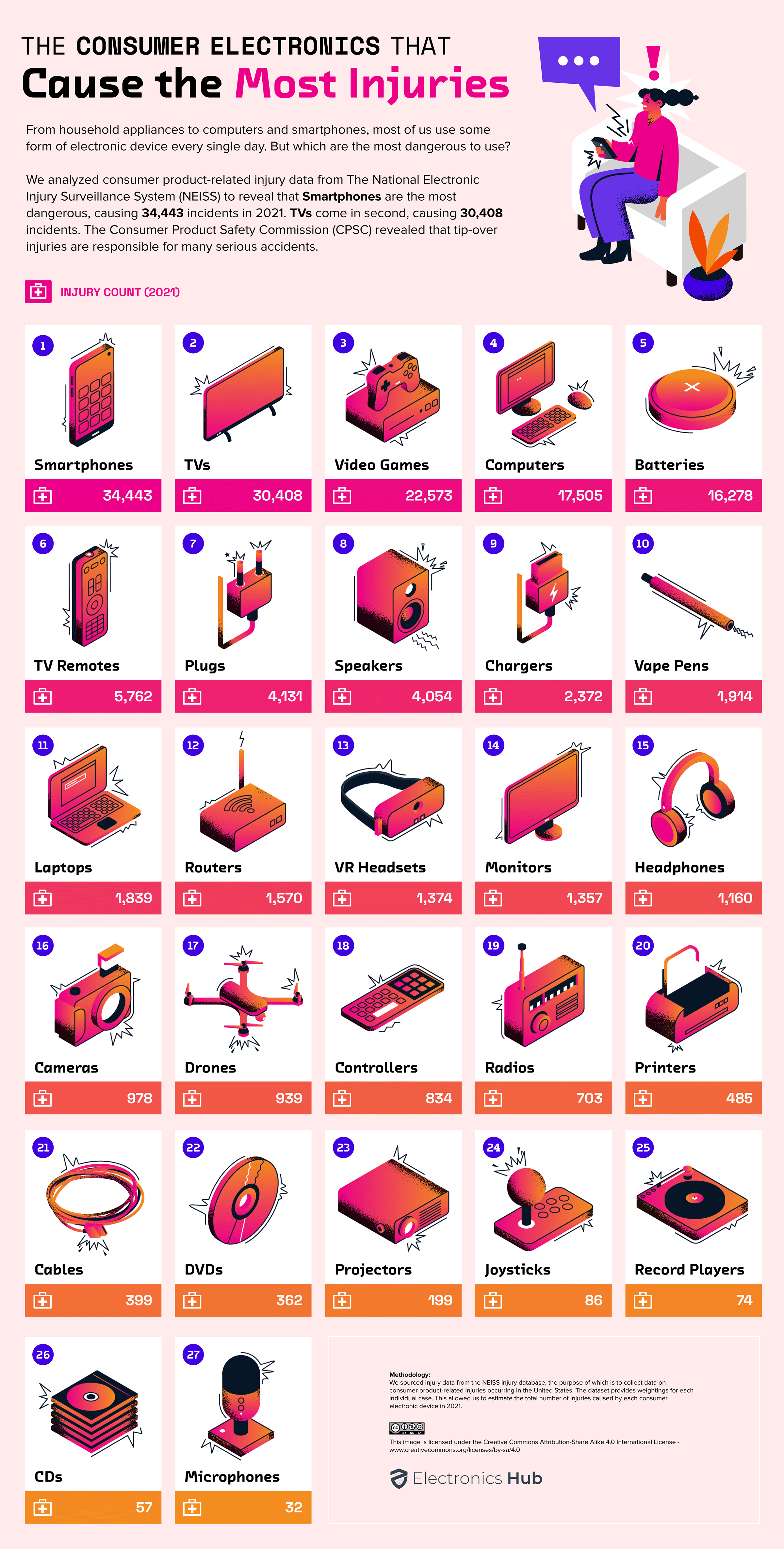
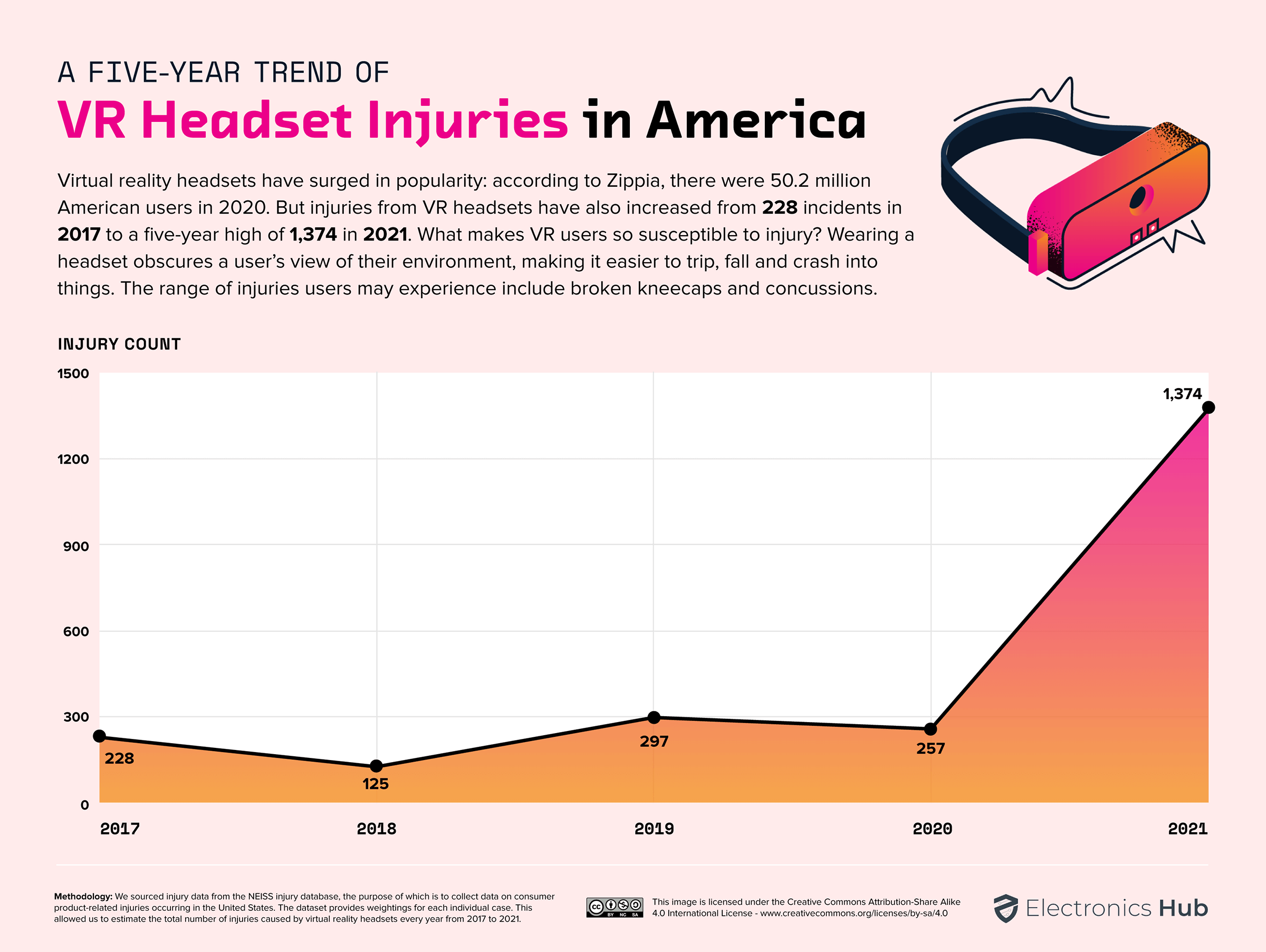
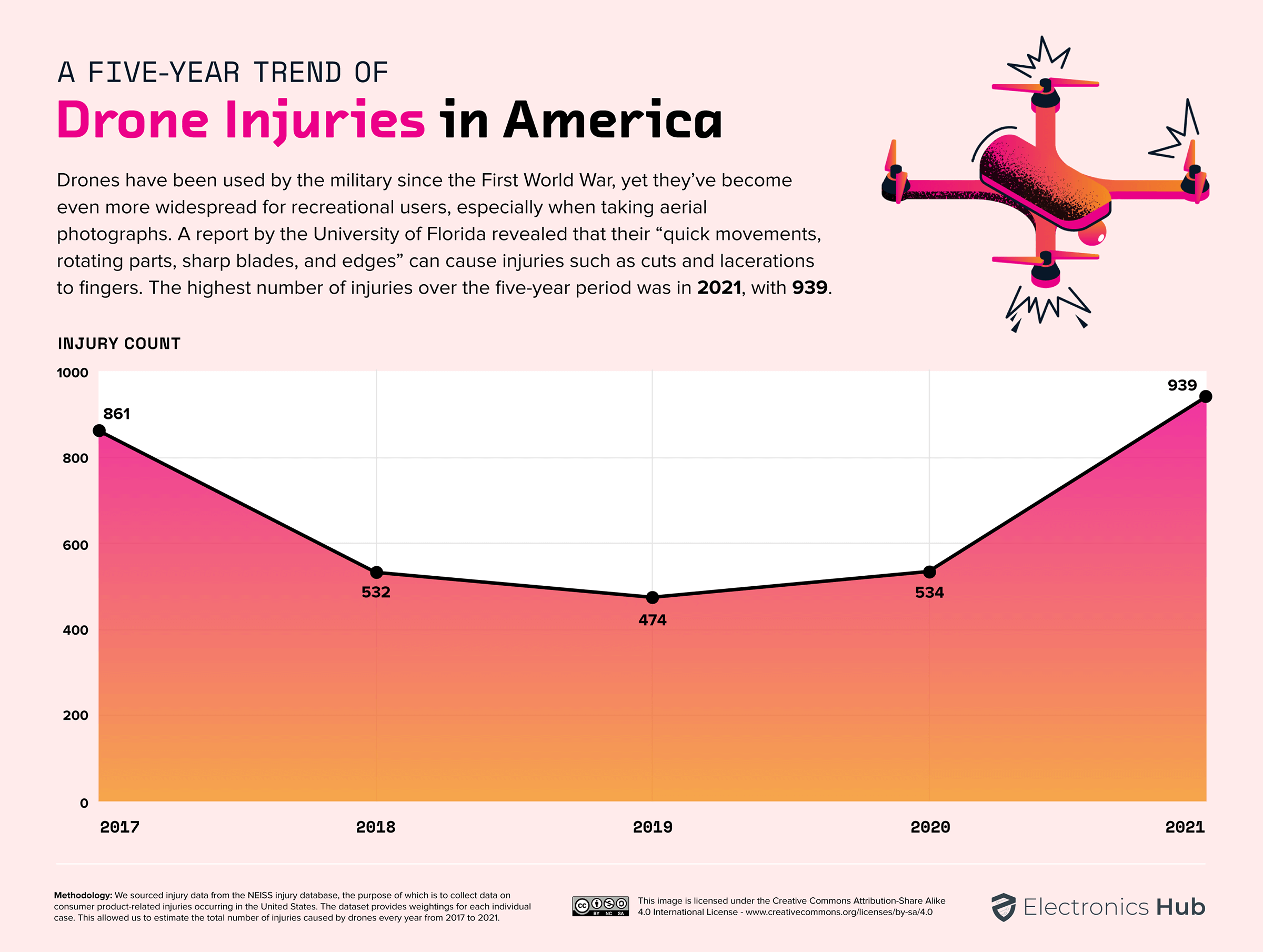

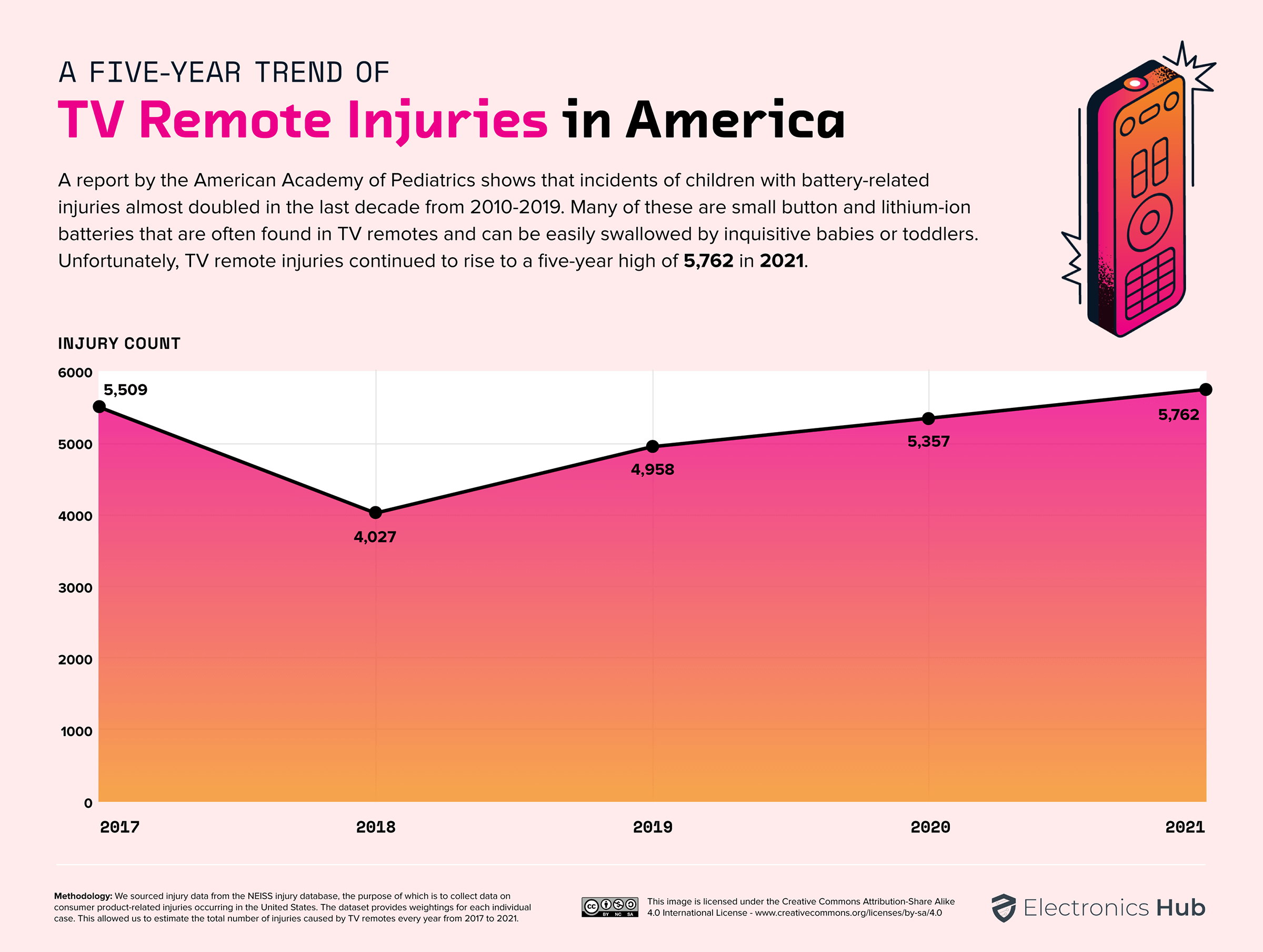
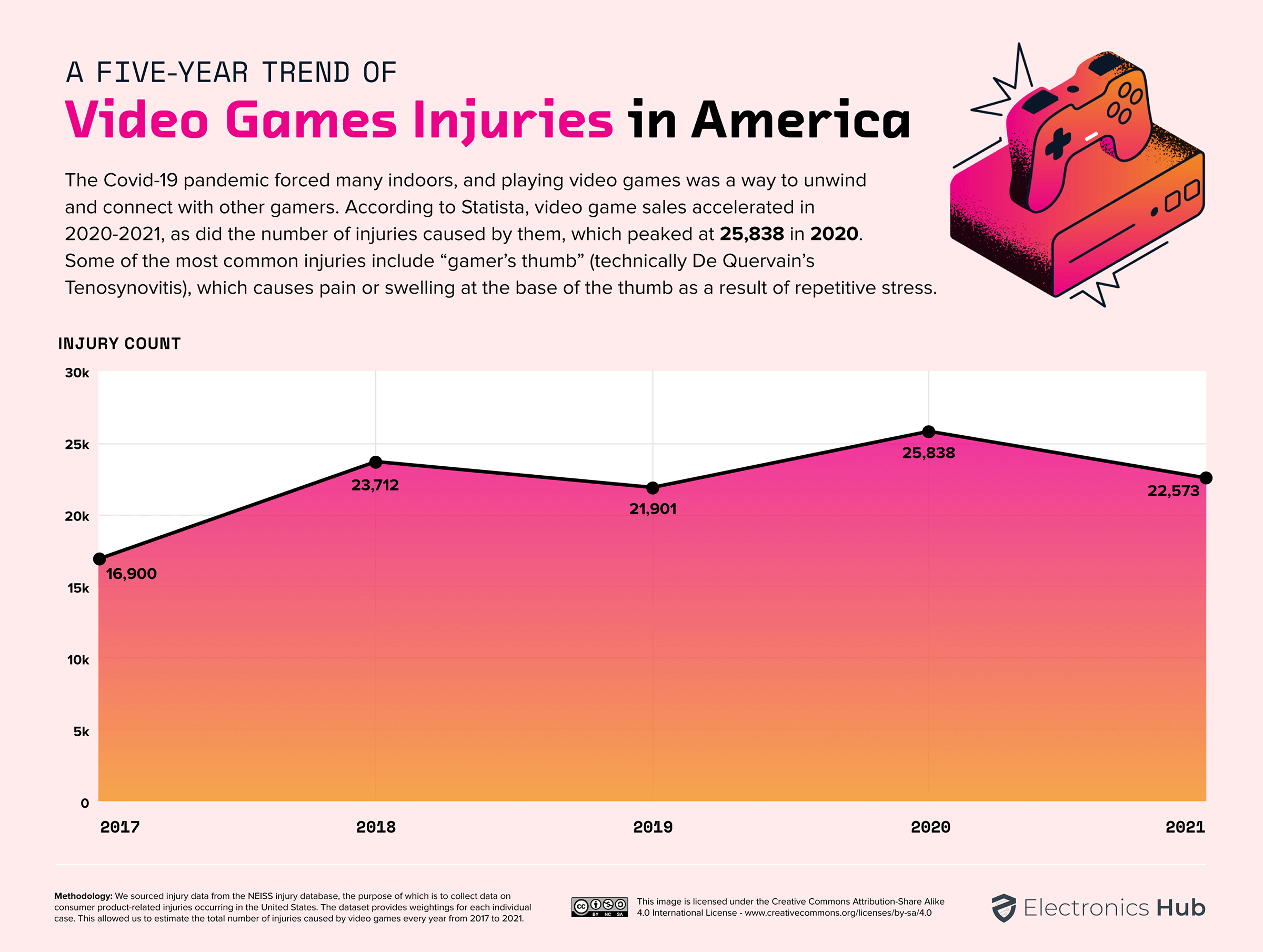
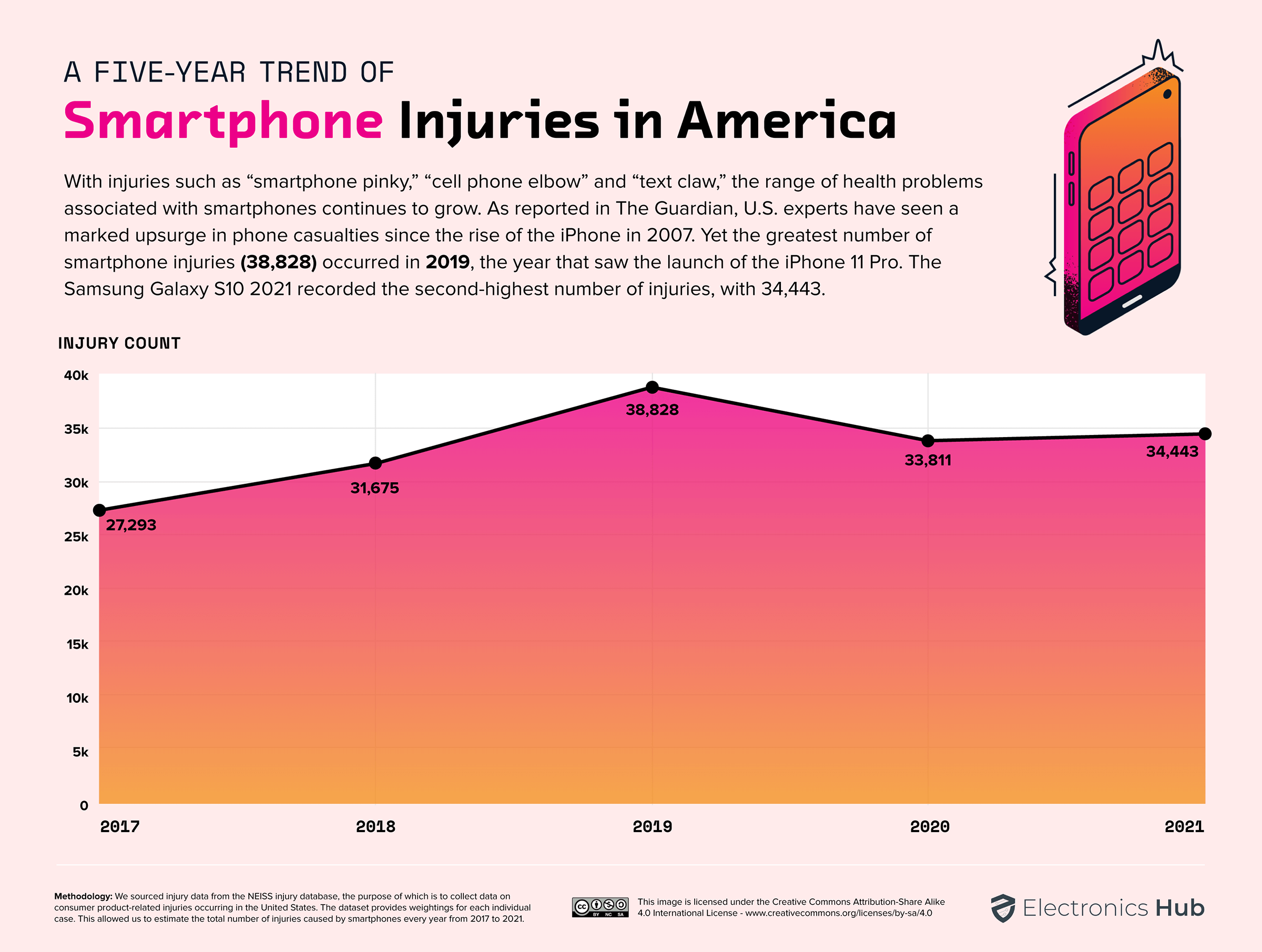


![]()